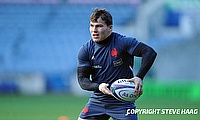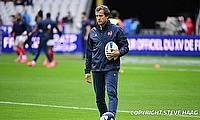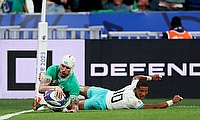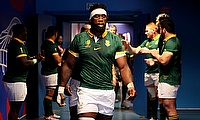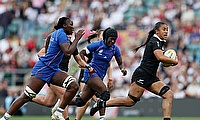Sekou Macalou and the prototypical player
“What rugby clubs are looking for these days, is a team full of Gavin Hastings clones. It’s not the game I played.”
Those were the words, about five years ago, of a friend from university’s father, who was, to be kind, rather portly.
Having joined us on one of our weekly rugby club socials, he proceeded to wax lyrical about his glory days, scrummaging against the great Jeff Probyn, before bemoaning the death of the old school, whereby a prop should be judged more on his ability to stow away pints, than his ability to contribute in the loose.
There was obviously a degree of levity to his comments, not to mention barely-concealed contempt for the arrival of the professional game, but his point on rugby craving certain prototypes was not wrong.
Five years on and there is an emerging prototype in rugby, specifically in the second and back rows, which is encapsulated perfectly by current French U20 star, Sekou Macalou.
The physical requirements of rugby these days are immense. Everyone has to be strong and quick, with teams now unable to carry designated, mobility-challenged scrummagers or fleet-footed backs who aren’t physical enough stop a rampaging block of muscle coming down their channel.
Macalou has the required strength and speed (and then some) to excel in his position on the flank, but it’s another, less talked about metric, which helps seperate players like Macalou from the crowd.
Arm length, one of the most coveted physical criteria in the NFL, is never talked about in rugby, outside of coaching circles, as a valued physical attribute. This added length is a valuable tool, particularly defensively, as it enables a player to steal lineout ball, create choke tackles and force knock-ons with greater efficiency.
The stamp down on in-air collisions is also something which, despite being the bane of many a rugby fan, is unlikely to be going anywhere, given the onus on player safety. However, what it does do is create another area of the game where arm length gives players a significant advantage, allowing them an opportunity to disrupt the receiving player without making contact, much as a defensive back would do to a receiver on the fields of the NFL.
Even if you’re not an avid follower of age-grade rugby and haven’t seen Macalou exhibit these skills, just search for highlight videos of Maro Itoje, Brodie Retallick, Iain Henderson or Courtney Lawes. They all utilise this underrated attribute to maximum potential and are rising to the top as a result.
Macalou is following in the footsteps of Itoje, Retallick and the rest as one of the darlings of the World Rugby U20 Championship, and is exhibiting to a global audience that whilst strength and speed are now precursors to simply playing the game, they are not necessarily what sets apart the new generation of great locks and flankers.
The French U20 openside secured victory for his side in their opening Championship game against Wales with two fantastic defensive plays, both of which illustrate why his physical talents, combined with his impressive understanding of the game, set him apart.
Wales were pushing hard for the French try line and when a Welsh carrier broke through the defensive line, Macalou was able to turn, make up a four or five metres on the Welsh player and then, utilising his long arms at full-stretch, wrap the carrier up and limit Wales to a five-metre scrum. Macalou then sprinted from his position at openside, with incredible acceleration, to surprise the Welsh scrum-half, reaching out to pick his pocket as he was preparing to pass to the fly-half and then take the ball well out of the danger zone for France.
Traditional monikers such as enforcers and lineout gurus, workhorses and jackals simply do not do these players justice, with the current crop of non-front row forwards taking rugby’s athleticism to a whole new level and have the prerequisites to embody all of these roles.
Whilst certain players are still able to carve out a career as specialists, they are in severe decline.
What moniker would you give Itoje, England’s current golden boy? He is a weapon at the lineout, a dynamic carrier, tackles ferociously for 80 minutes and can win turnover ball at the breakdown, lineout or in mauls. He has the strength to pack down in the engine room, but also the acceleration, speed and stamina to man the flank with no drop in ability. He, like Macalou, defies these archetypal roles we still label players with.
It is naive to suggest players with a longer reach are all destined for success, as it has to be married with a whole host of other attributes, but it is clear to see the advantage that it brings players. We’ve focused on the defensive aspect, but it is also a huge fillip to the offensive side of the game, with the likes of Retallick and Leone Nakarawa using that reach to pull off the most audacious of offloads.
It’s only a matter of time before arm length is listed alongside height and weight on rugby players’ club profiles. If the NFL is a game of inches, then rugby has historically been a game of yards, but that is changing – quickly.

